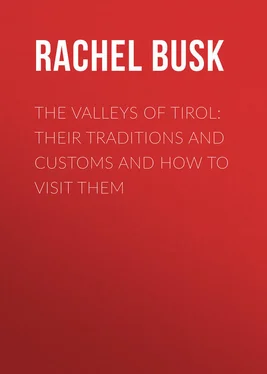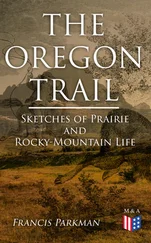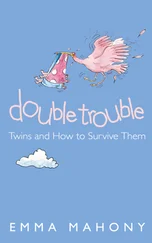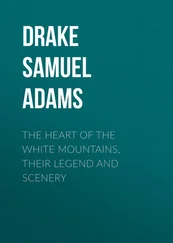Rachel Busk - The Valleys of Tirol - Their traditions and customs and how to visit them
Здесь есть возможность читать онлайн «Rachel Busk - The Valleys of Tirol - Their traditions and customs and how to visit them» — ознакомительный отрывок электронной книги совершенно бесплатно, а после прочтения отрывка купить полную версию. В некоторых случаях можно слушать аудио, скачать через торрент в формате fb2 и присутствует краткое содержание. Жанр: foreign_antique, foreign_prose, Путешествия и география, на английском языке. Описание произведения, (предисловие) а так же отзывы посетителей доступны на портале библиотеки ЛибКат.
- Название:The Valleys of Tirol: Their traditions and customs and how to visit them
- Автор:
- Жанр:
- Год:неизвестен
- ISBN:нет данных
- Рейтинг книги:3 / 5. Голосов: 1
-
Избранное:Добавить в избранное
- Отзывы:
-
Ваша оценка:
- 60
- 1
- 2
- 3
- 4
- 5
The Valleys of Tirol: Their traditions and customs and how to visit them: краткое содержание, описание и аннотация
Предлагаем к чтению аннотацию, описание, краткое содержание или предисловие (зависит от того, что написал сам автор книги «The Valleys of Tirol: Their traditions and customs and how to visit them»). Если вы не нашли необходимую информацию о книге — напишите в комментариях, мы постараемся отыскать её.
The Valleys of Tirol: Their traditions and customs and how to visit them — читать онлайн ознакомительный отрывок
Ниже представлен текст книги, разбитый по страницам. Система сохранения места последней прочитанной страницы, позволяет с удобством читать онлайн бесплатно книгу «The Valleys of Tirol: Their traditions and customs and how to visit them», без необходимости каждый раз заново искать на чём Вы остановились. Поставьте закладку, и сможете в любой момент перейти на страницу, на которой закончили чтение.
Интервал:
Закладка:
At the farther end of the valley is Zell, which though smaller in population than Fügen, has come to be considered its chief town. Its principal inn, for there are several — zum Post – if I recollect right, claims to be not merely a Gasthaus , but a Gasthof . The Brauhaus , however, with less pretension, is a charming resort of the old-fashioned style, under the paternal management of Franz Eigner, whose daughters sing their local melodies with great zest and taste. The church, dedicated to St. Vitus, is modern, having been built in 1771–82; but its slender green steeple is not inelegant. It contains some meritorious frescoes by Zeiler. The town contains some most picturesque buildings, as the Presbytery, grandiloquently styled the Dechanthof , one or two educational establishments, several well-to-do private houses, and the town-hall, once a flourishing brewery, which failed – I can hardly guess how, for the chief industry of the place is supplying the neighbourhood with beer.
A mile beyond Zell is Hainzenberg, where the process of gold-washing on a small scale may be studied, said to be carried on by the owner, the Bishop of Brizen, on a sort of ultra-co-operative principle, as a means of support to the people of the place, without profit to himself. There is also a rather fine waterfall in the neighbourhood, and an inn where luncheon may be had. The most interesting circumstance, perhaps, in connexion with Zell is the Kirchweih-fest , which is very celebrated in all the country round. I was not fortunate enough to be in the neighbourhood at the right time of year to witness it. On the other side of the Hainzenberg, where the mountain climber can take his start for the Gerlozalp, is a little sanctuary called Mariä-rastkapelle , and behind it runs a sparkling brook. Of the chapel the following singular account is given: – In olden time there stood near the stream a patriarchal oak sacred to Hulda; 54after the introduction of Christianity the tree was hewn down, and as they felled it they heard Hulda cry out from within. The people wanted to build up a chapel on the spot in honour of the Blessed Virgin, and began to collect the materials. No sooner had the labourers left their work, however, than there appeared an army of ravens, who, setting themselves vigorously to the task, carried every stone and every balk of wood to a neighbouring spot. This happened day after day, till at last the people took it as a sign that the soil profaned by the worship of Hulda was not pleasing to heaven, and so they raised their chapel on the place pointed out by the ravens, where it now stands.
After Mayrhof, the next village (with three inns), in the neighbourhood of which garnets are found and mills for working them abound, the Zillerthal spreads out into numerous branches of great picturesqueness, but adapted only to the hardy pedestrian, as the Floitenthal, the Sondergrundthal, the Hundskehlthal (Dog’s-throat valley), the Stillupethal, with its Teufelsteg, a bridge spanning a giddy ravine, and its dashing series of waterfalls. The whole closed in by the Zemmer range and its glaciers, the boundary against South-Tirol, said to contain some of the finest scenery and best hunting-grounds in the country. It has been also called the ‘el Dorado’ of the botanist and the mineralogist. The most important of these by-valleys is the Duxerthal, by non-Tiroleans generally written Tuxerthal, a very high-lying tract of country, and consequently one of the coldest and wildest districts of Tirol. Nevertheless, its enclosed and secluded retreat retains a saying perhaps many thousand years old, that once it was a bright and fertile spot yielding the richest pastures, and that then the population grew so wanton in their abundance that they wasted their substance. Then there came upon them from above an icy blast, before which their children and their young cattle sank down and died; and the herbage was, as it were, bound up, and the earth was hardened, so that it only brought forth scarce and stunted herbs, and the mountain which bounded their pleasant valley itself turned to ice, and is called to this day die gefrorene Wand , the frozen wall. The scattered population of this remote valley numbered so few souls, that they depended on neighbouring villages for their ecclesiastical care, and during winter when shut in by the snow within their natural fastnesses, were cut off from all spiritual ministration, so that the bodies of those who died were preserved in a large chest, of which the remains are yet shown, until the spring made their removal to Mattrey possible. In the middle of the seventeenth century they numbered 645 souls, and have now increased to about 1,400; about the year 1686 they built a church of their own, which is now served by two or three priests. For the first couple of miles the valley sides are so steep, that the only level ground between them is the bed of an oft-times torrential stream, but yet they are covered almost to the very top with a certain kind of verdure; further on it widens out into the district of Hinterdux, which is a comparatively pleasant cheerful spot, with some of the small cattle (which are reared here as better adapted to the gradients on which they have to find their food,) browsing about, and sundry goats and sheep, quite at home on the steeps. But scarce a tree or shrub is to be seen – just a few firs, and here and there a solitary mountain pine; and in the coldest season the greatest suffering is experienced from want of wood to burn. The only resource is grubbing up the roots remaining from that earlier happier time, which but for this proof might have been deemed fabulous.
The hardships which the inhabitants of this valley cheerfully undergo ought to serve as a lesson of diligence indeed. The whole grass-bearing soil is divided among them. The more prosperous have a cow or more of their own, by the produce of which they live; others take in cows from Innsbruck and Hall to graze. The butter they make becomes an article of merchandise, the transport of which over the mountain paths provides a hard and precarious livelihood for a yet poorer class; the pay is about a halfpenny per lb. per day, and to make the wage eke out a man will carry a hundred and a woman fifty to seventy pounds through all weathers and over dangerous paths, sleeping by night on the hard ground, the chance of a bundle of hay in winter being a luxury; and one of their snow-covered peaks is with a certain irony named the Federbett. They make some six or seven cwt. of cheese in the year, but this is kept entirely for home consumption.
The care of these cattle involves a labour which only the strongest constitution could stand – a continual climbing of mountains in the cold, often in the dark, during great part of the year allowing scarcely four or five hours for sleep. Nor is this their only industry. They contrive also to grow barley and flax; this never ripens, yet they make from it a kind of yarn, which finds a ready sale in Innsbruck; they weave from it too a coarse linen, which helps to clothe them, together with the home-spun wool of their sheep. Also, by an incredible exercise of patience, they manage to heap up and support a sufficient quantity of earth round the rough and stony soil of their valley to set potatoes, carrots, and other roots. Notwithstanding all these hardships, they are generally a healthy race, remarkable for their endurance, frugality, and love of home. Neither does their hard life make them neglect the improvement of the mind; nowhere are schools more regularly attended, although the little children have many of them an hour or two’s walk through the snow. The church is equally frequented; so that if the great cold be sent, as the legend teaches, as a chastisement, 55the people seem to have had grace given them to turn it to good account.
Читать дальшеИнтервал:
Закладка:
Похожие книги на «The Valleys of Tirol: Their traditions and customs and how to visit them»
Представляем Вашему вниманию похожие книги на «The Valleys of Tirol: Their traditions and customs and how to visit them» списком для выбора. Мы отобрали схожую по названию и смыслу литературу в надежде предоставить читателям больше вариантов отыскать новые, интересные, ещё непрочитанные произведения.
Обсуждение, отзывы о книге «The Valleys of Tirol: Their traditions and customs and how to visit them» и просто собственные мнения читателей. Оставьте ваши комментарии, напишите, что Вы думаете о произведении, его смысле или главных героях. Укажите что конкретно понравилось, а что нет, и почему Вы так считаете.












